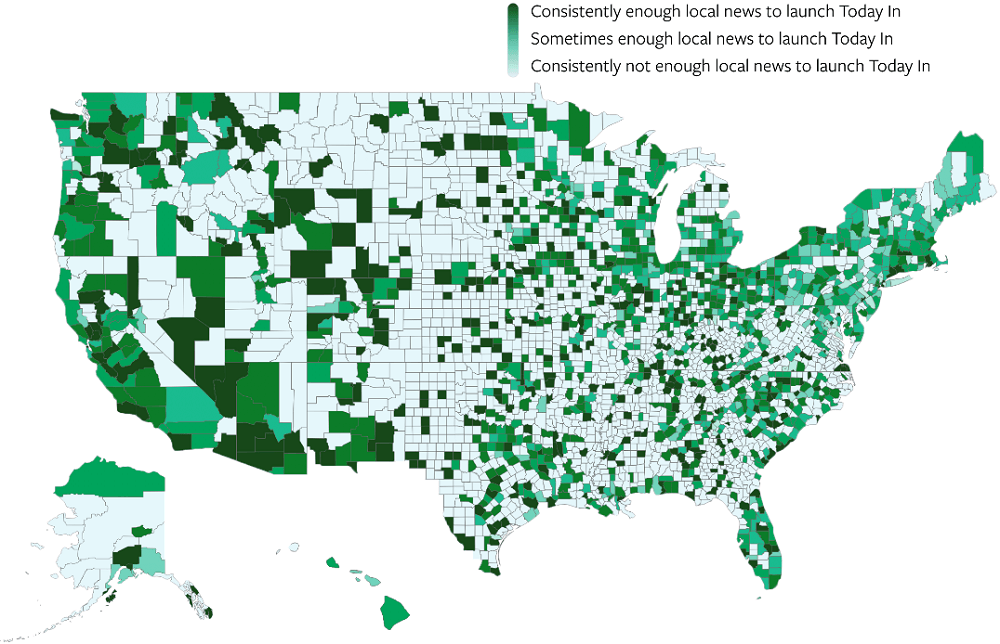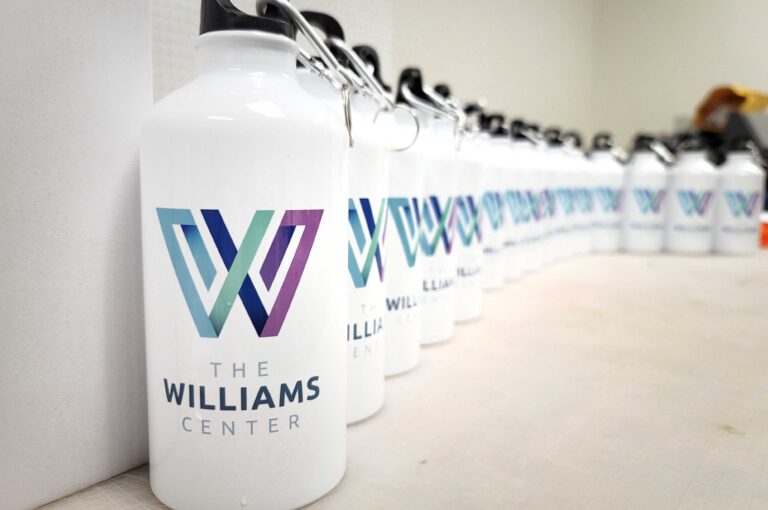Lack of Local News Hurting Facebook’s News Service ‘Today In’
Facebook launched what it thought would be an innovative news service late in 2018, but it’s not going as planned.
The news service, called Today In, is meant to provide users with local news information on a consistent basis. With local news outlets continuing to shrink in staff size while other newsrooms are closing down all together, the move made sense for a platform hindered by its reputation as a “fake news” source.
But, that lack of local news outlets is making it even more difficult for Facebook to succeed in its mission to help deliver quality news to the right people with a local focus.
What is Facebook’s News Service ‘Today In’?
Today In was created by Facebook to be a “local news section” dedicated to connecting “people to news and information about their community.”
Available in approximately 400 cities in the United States, Today In tasks Facebook technicians with finding quality original reporting from these areas. Then Facebook can re-publish the news to the right audience members in the right geographic location.
But with the lack of reputable news coverage coming out of many areas across the United States, Facebook is struggling to deliver what it had planned.
Struggling to Connect Users with News
While Facebook has become a platform where fake news is shared just as much as real news — if not even more so — that’s not the (entire) problem in this specific instance.
In this case, Facebook says it is facing a lack of news to feed into the service because of the demise of so many local newspapers.
It has become such an issue that Facebook is sharing its research with academics at Duke, Harvard, Minnesota, and North Carolina who have been studying the severity of staff downsizing and newspaper closures.
Around a third of U.S. Facebook users live in areas where the social network hasn’t been able to find enough local news to launch Today In the specific area.
In support of this research effort, Facebook published the following statement and infographic:
“About one in three users in the U.S. live in places where we cannot find enough local news on Facebook to launch Today In. What does that mean exactly? In the last 28 days, there has not been a single day where we’ve been able to find five or more recent news articles directly related to these towns. This does not vary much by region: 35% of users in the Midwest, Northeast, and South — and 26% in the West— live in places where we can’t find much local news on Facebook.”

Combating News Deserts
A “news desert” is exactly what it sounds like — communities left with no daily local news source.
The percentage of these news deserts is higher in the Midwest and the Northeast United States.
An astonishing 43 percent of the desired cities in Facebook’s Today In footprint don’t have a single day when Facebook’s team was able to find five or more recent news articles directly related to the cities.
The South and West have a figure of 38 percent.
Facebook will deem an area or community unsuitable for Today In if it cannot find a single day within a month that has a minimum of five news items to share.
As we can see, relative to the national average, areas such as Arizona have fewer users living in areas where Facebook is unable to find enough local news. Whereas Ohio is representative of the national average of 31 percent.
“It affirms the fact that we have a real lack of original local reporting,” Penelope Muse Abernathy, a University of North Carolina professor who studies the topic of Journalism, told the New York Times.
This scarcity of local newspaper outlets begs the question, where are you finding your local news? Or, any news for that matter?
Supporting Local News Through Facebook
While Facebook doesn’t necessarily have the answers, it is putting its best foot forward in an attempt to work with other organizations and publications to garner ways to distribute news and develop initiatives to make local news accessible.
Facebook has plans to award approximately 100 grants to people with ideas to make news available. The grants range from $5,000 to $25,000.
The project, aptly named Facebook Journalism Project Community Network, is aimed to support building a sense of community through local news.
Whether a news publisher is trying to build a business around memberships, report in an underserved community, or build a tool that helps local storytellers find and engage news audiences — Facebook wants to provide a platform to serve the community.
Grant recipients will be connected to Facebook’s community of Accelerator alumni as well as to fellow grant awardees, establishing a network of experts and resources for continued support.
Is Facebook Helping or Hurting?
It’s no secret Facebook has been through multiple cases of questioned credibility with the stories that are often shared by people and pages across the network. And it has been vocal that it is working to improve that drastically.
But, is Facebook to blame for the demise of local news outlets? Not solely or completely.
But the internet obviously changed the way reporting and journalism, in general, exist in our ecosystem.
According to US News Deserts, research found that approximately 1,800 local newspapers have closed since 2004.
Coincidentally, the Facebook platform launched that same year.
While we can’t blame Facebook as the sole reason so many newspapers have closed, it’s apparent that the platform with such tremendous reach didn’t do much, if anything, to help these trustworthy news outlets succeed. Until now.
Since the early-to-mid-2000s, large portions of advertising dollars were shifted from print advertising to the web. This is in part due to the readily available information from Google and Facebook and the increasing demand for information and entertainment from users.
This shift in advertising dollars and our need to access information at a faster pace than print media can offer could be one of the reasons why so many newspapers have folded.
As someone who studied and worked in Journalism throughout my young-adult life, the scarcity of available local news today (or any news, for that matter) is alarming.
Facebook Can Do More
As we know, Facebook is a substantial company with a substantial amount of money and resources at its fingertips.
The social media giant could not only improve its business model and the production value of Today In and the Facebook Journalism Project, but it could also improve the news and reporting ecosystem as well as the ecosystem of our society as a whole.
Facebook could potentially solve the lack of news issue in three ways.
- Investment Opportunities: With the amount of revenue the company makes on a year basis, it would be quite easy for Facebook to purchase these newsrooms. In turn, the newsrooms could either reopen, or continue to stay open and produce local news.
- Job Opportunities: Hire the reporters, editors, and photographers who have since been laid off due to the newsrooms closing. It would be fairly easy for them to work remotely and produce original content for Today In.
- Freelance Opportunities: It’s quite possible that the workers who were laid off have found other work opportunities, but they could be open to freelance opportunities (Hello, side hustle!). Giving professionals the opportunity to work their day-to-day job and then contribute to Today In is almost a win-win for the company. Facebook could receive content that is unique to an area and only have to pay the professional on an as-need basis.
With the resources Facebook has to offer, and the exceptional reach of the platform, helping journalists curate and distribute current and local news could be handled with ease.






